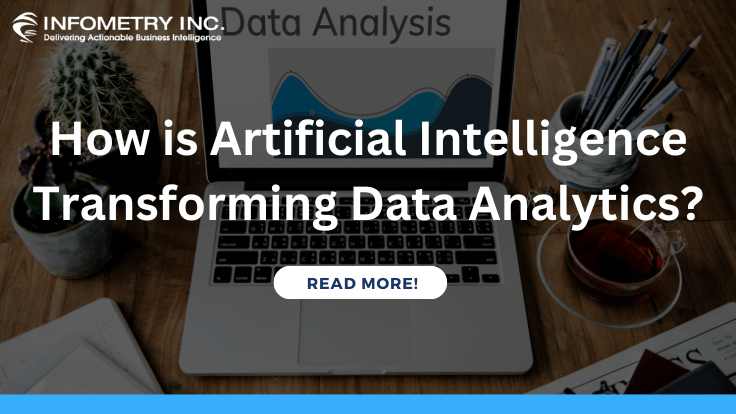
How is Artificial Intelligence Transforming Data Analytics?
February 7, 2023
A Guide to Hyperautomation and Its Process with Examples
February 13, 2023Throughout the last decade, many organizations have debuted data visualization platforms that empower associations to analyze trends and understand their organizations better. Data Aggregation & Analysis tools like Microsoft Power BI, Amazon Quick Sight, Tableau, and QlikView address some potential applications organizations could use.
Data Visualization translates raw data into visual structures like maps, charts, and graphs. It has quickly become famous for publishing data on the web. It helps in different ventures, from business intelligence to journalism, for better information and conveys the vision inside information. Showing information visually makes it easier to grasp, analyze, and count as best practices. It likewise helps decision-making quicker and tracking new hidden patterns to understand complex ideas better. However, most business clients utilize these data visualization platforms to progressively communicate with this application’s top layer: the dashboard. To develop these easy-to-use dashboards, we need to think more like designers instead of programmers.
Why Use Data Visualization?
These days, the amount of information created and consumed consistently is vast. In 2020, we had 64.2 zettabytes of information and data created, captured, copied, and consumed worldwide. Contrasted with 2019, the number has expanded by 56.6% because of the worldwide pandemic and changes in people’s habits. The information volume will extend dramatically in forthcoming years, as Statista forecasts. This is huge!
To that end, credibility, visibility, and data comprehension are significant. If done well, data visualization can become a considerable resource to reach goals and engage audiences for organizations, educators, marketers, sales and project teams, and everyone who works with loads of information.
On the other hand, broadcasting bad charts and graphs can prompt inconvenient outcomes.
How can you guarantee that your data visualizations are practical and visually appealing? The key is accurately characterizing the reason, picking the correct methodology, selecting appropriate organizations, and embracing great design principles.
Below are the top 10 effective data visualization best practices to help you get all these aspects right:
Keep it naive
Avoid using too many colors, shapes, or labels in a single visualization.
Use appropriate charts
Use the correct chart to represent your data, such as a bar chart for comparing different categories or a scatter plot showing correlation.
Focus on the message
The primary purpose of visualization should be to communicate a specific message or insight rather than just displaying data.
Use color effectively
To highlight important information and make it easy to understand. Avoid using so many colors or colors that are hard to distinguish.
Label axes and units
Always label the axes and units of measurement on a chart to clarify what the data represents.
Use codes and annotations
Use codes and annotations to provide additional information and context for the data.
Provide context
Provide context for the data by including information about the time, location, or other relevant details.
Make it interactive
Interactive visualizations allow users to explore and gain insights from the data, making them more engaging and informative.
Optimize for different device
Optimize visualizations for other devices, such as desktop, mobile, or print, to ensure they are easily readable and accessible.
Test and iterate
Test visualizations with different audiences and iterate based on feedback to ensure they are practical and easy to understand.
Here Are the Most Popular Sorts of Charts for Data Visualization
Line Charts
These should be used to compare values over time and are outstanding for displaying large and small changes. They can also compare changes to more than one data group.
Bar Charts
These should be used to compare quantitative data from several categories. They can also track changes over time but are highest used only when those variations are significant.
Scatter Plots
Scatter plots should be used to display values for two variables for a set of data. They’re excellent for exploring the relationships between the two groups.
Pie Charts
These should be used to show parts of a whole. They can’t display things like changes over time.
Do Follow These Data Visualization Best Practices in Mind
Analyzing, processing and effectively visualizing large datasets has become critical in illuminating business choices and deciding the digression of all proficient movements and tasks.
Data visualizations inform, describe and convince from sales to marketing and business development!
Utilizing legitimate data visualization best practices can improve things significantly. Observing the above rules guarantees that your data visualizations always remain legible, convincing, and compelling.
There is numerous data visualization software available, and about infographics, Infometry offers a wide assortment of formats to introduce your information beautifully and attractively.





